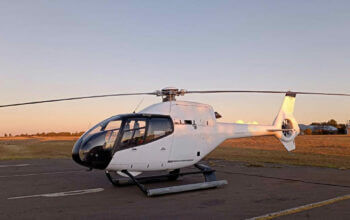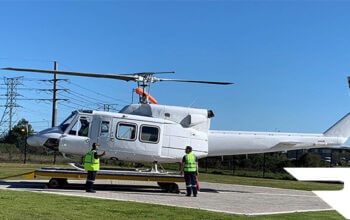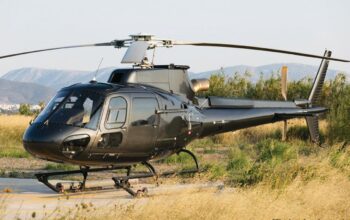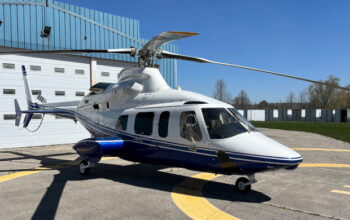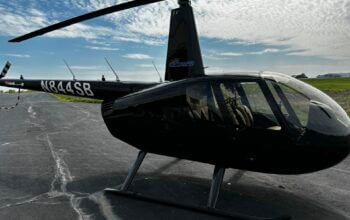Estimated reading time 5 minutes, 24 seconds.
On June 9, the first Pipistrel Velis Electro aircraft in Canada (C-GAUW) took to the skies over the Region of Waterloo International Airport (YKF) for its inaugural flight — which was conducted as a circuit flight at 1,000 feet — as part of a partnership with Transport Canada to evaluate battery powered electric flight in Canada.
The Slovenia-built Velis Electro is currently the world’s first and only commercially available, type-certified electric training aircraft — having received certification from the European Union Aviation Safety Agency (EASA) in June 2020.
The two-seat electric training aircraft arrived in Canada in October 2022 to its new owners, the Waterloo Wellington Flight Centre (WWFC) and its partner WISA (the Waterloo Institute for Sustainable Aeronautics) of the University of Waterloo (UW). Since then, WWFC and WISA have been working through different stages of evaluating the aircraft, and intend to share data with Pipistrel and Transport Canada to support a certification decision in Canada.

The initial stage consisted of ground runs — which took place in mid-May — to ensure the aircraft’s charge/discharge rate was as expected. The second stage, which has officially begun, consists of circuit flights, while the third stage is to include missions for practice area exercises.
“We’re verifying that the aircraft is performing as expected,” said Paul Parker, associate director for environment at WISA and professor at UW. Parker is also a pilot who was on board the Velis Electro for its first circuit flight at YKF.
“Transport Canada called for a partnership to evaluate electric planes, and we were the first [organization] in Canada that they chose as a partner,” noted Parker. “But there will be many more [partners] to come.”
The Velis Electro features two 24-kWh battery packs (one in the front of the aircraft and one in the back) with dual cooling pumps for enhanced safety. The batteries run simultaneously but have the ability to run independently should one battery fail. In the latter case, the aircraft would operate with the same amount of power, but would not be able to fly as far.
Parker said the average range of the Velis Electro is 60 kilometers, but the range ultimately depends on the power setting.
“In order to go further, you need to go slower, because you’re going to have less drag,” he explained. “If you go up to max cruise, you can cruise at 108 knots but you’re going to burn through your battery quickly.”
Parker said flying the all-electric aircraft is virtually the same as flying a conventional aircraft. “The controls are all the same,” he noted. However, it’s actually a bit simpler to fly “because you’re not worrying about your fuel/air mixture. It’s just pure power,” he explained.
Noteworthy is the fact that the Velis Electro has a relatively low noise level compared to conventional aircraft — measuring in at just 60 decibels.
Parker said the younger generation of students was a major driving force behind the WISA/WWFC partnership to evaluate electric flight in Canada — as there are many young people who want to get into aviation, but want to do so in the most sustainable way possible.
As for the Velis Electro and its potential to sustainably train future aviators across Canada, Parker said WISA hopes the aircraft will achieve Transport Canada certification by the fall.
